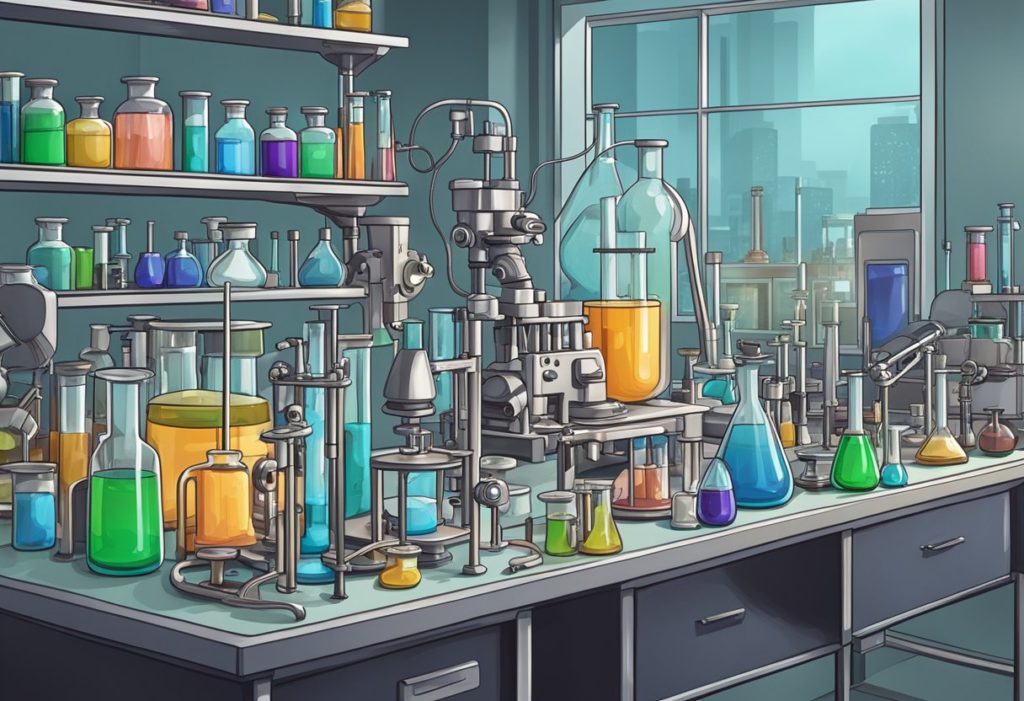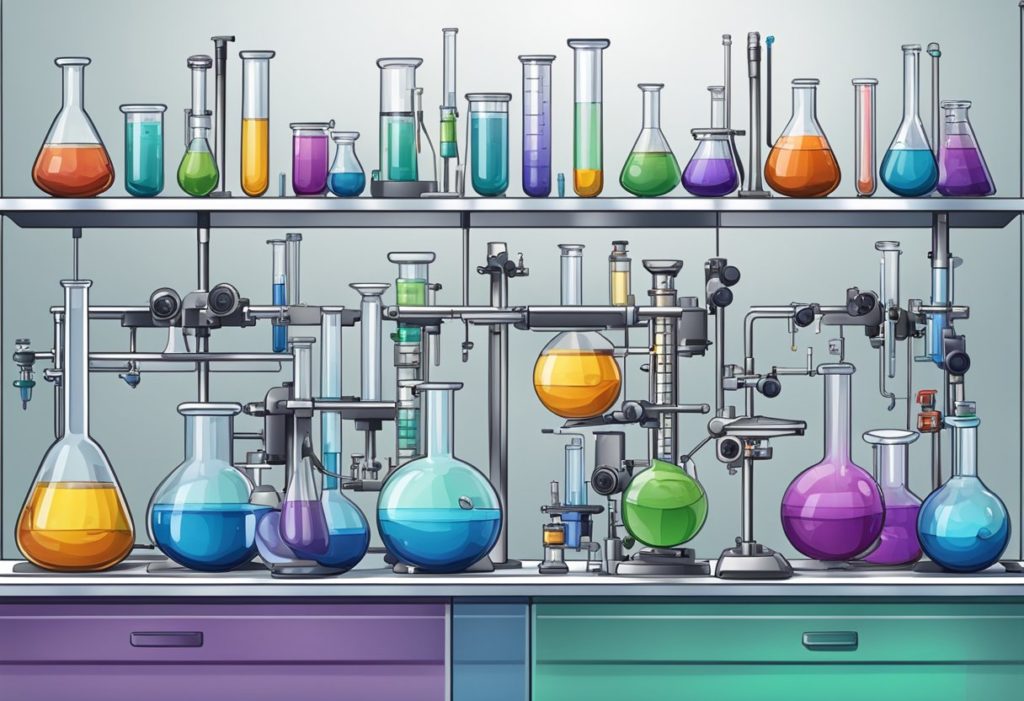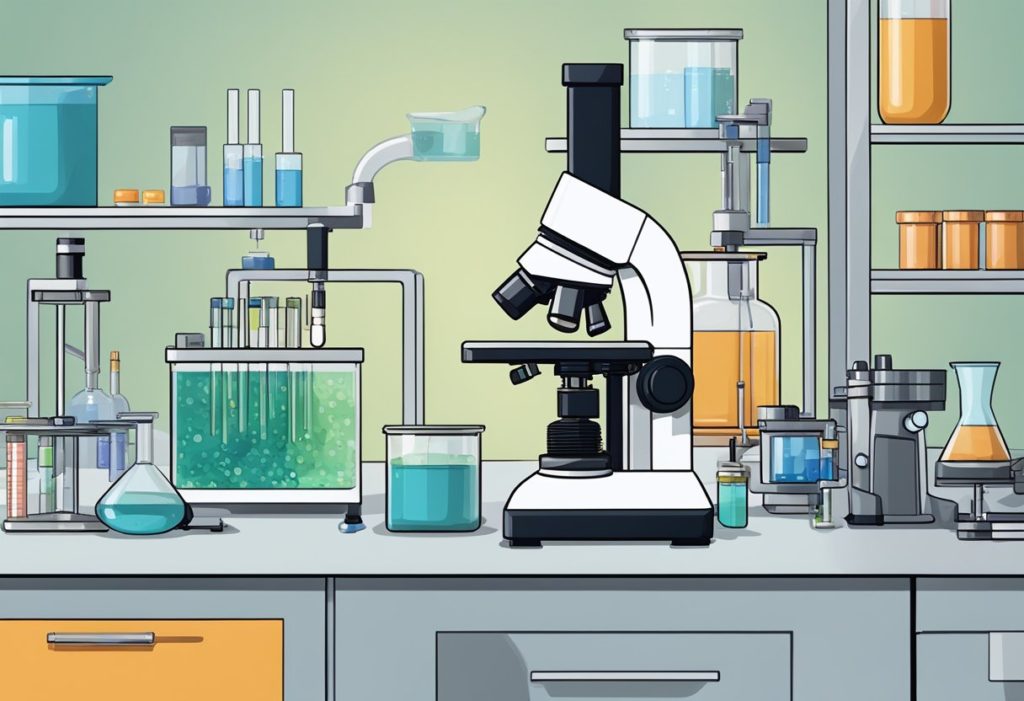In any laboratory, the range of equipment is vast and specialized, depending on the scientific field and the experiments being conducted. You find glassware like beakers and flasks for simple mixing and measuring, while more complex machinery like spectrophotometers and centrifuges analyze samples with precision. Given the variety of scientific disciplines, from biology and chemistry to physics and engineering, the corresponding lab equipment differs to accommodate distinct experimental needs.

High-quality, reliable lab equipment is essential for accurate results. In chemistry labs, you encounter an array of apparatus designed for heating, cooling, distillation, and titration, while biological research relies heavily on microscopes, autoclaves, and incubators. Each piece of equipment, whether for measuring time, temperature, mass, or volume, is integral to scientific inquiry.
Your understanding of laboratory equipment and its applications can enhance your grasp of complex scientific concepts. The equipment serves not only as tools for investigation but also as the backbone of reproducible and valid research across laboratories worldwide. Whether you’re a student, a professional scientist, or simply curious, acknowledging the diversity and roles of lab equipment is a crucial step in appreciating the scientific process.

In the diverse world of scientific experimentation, you’ll encounter an array of lab equipment designed for various tasks. Quality and precision form the foundation of these tools, each serving a specific purpose in the laboratory setting.
Most Common Lab Equipment by Category
General laboratory equipment encompasses a range of tools and containers you frequently use. Glassware, essential for containing and mixing chemicals, includes items like beakers, test tubes, flasks, and volumetric flasks. For precise liquid handling, pipettes, graduated cylinders, and burets are at your disposal. To transfer or hold hot glassware safely, tongs and tools such as pipet bulbs become indispensable. Solid materials are often weighed with a balance, and thermometers provide accurate temperature readings.
When your work involves heating substances, Bunsen burners are a common and reliable heat source. They facilitate processes such as evaporation and sterilization. For more controlled heating, you may use heating mantles or hot plates. Crucibles are small containers that can withstand high temperatures, ideal for melting or calcining samples. Incubators are used for biological experiments where samples require precise temperature conditions over time.
Accurate measurement is critical in your laboratory endeavors. Volumetric flasks enable precise volume measurements, crucial for creating solutions with exact concentrations. Graduated cylinders and burets help in measuring and transferring liquids with accuracy. Spectrophotometers are sophisticated instruments used to measure the intensity of light, and thus, the concentration of a sample. Balances range in precision and are used to weigh solids accurately, which is essential in quantitative analysis.

Your work in the lab requires specific tools designed to meet the exact needs of intricate procedures and precise measurement. This section introduces essential items that play a critical role in specialized areas of research and development.
Spectrophotometers are foundational to your analytical tasks, allowing you to quantify the light absorbing properties of molecules. A carefully calibrated spectrophotometer can be pivotal in biochemistry to measure concentrations of DNA or proteins. In your arsenal, you should also include robust pH meters for precise acidity or alkalinity measurements necessary in various analyses.
For your biological studies, an accurate microscope is indispensable to examine microorganisms and cellular structures in detail. Meanwhile, centrifuges support you by separating substances of different densities efficiently. You should also consider incubators which are crucial for culturing and maintaining microbial growth under controlled conditions.
| Category | Example Equipment | Primary Use | Best For |
|---|---|---|---|
| General Apparatus | Beakers, flasks | Mixing, storing chemicals | Chemistry, biology labs |
| Heating Devices | Bunsen burners, hot plates | Heating, boiling, sterilization | Chemistry, microbiology |
| Measuring Tools | Spectrophotometers, balances | Measuring properties, mass analysis | Biochemistry, physics |
| Biological Equipment | Microscopes, centrifuges | Sample analysis, separation | Microbiology, biomedical research |
| Safety Equipment | Goggles, fume hoods | Protection from chemicals and fumes | All laboratory environments |

An integral part of working in a laboratory is maintaining a safe environment, which includes using the correct safety equipment and adequate cleaning and sterilization practices to handle materials like rubber stoppers, glassware, and chemicals.
Your personal safety should always be a priority in the laboratory. Essential safety equipment includes safety goggles to protect your eyes from chemical splashes, and latex gloves to prevent skin contact with hazardous materials. Replace gloves after handling aggressive chemicals or when they become contaminated. Additionally, ensure that the fit of your protective gear suits you properly to maintain both safety and comfort.
Cleaning and sterilizing your lab equipment are crucial for maintaining a controlled environment and preventing contamination:
Q: What are the essential equipment items for a school laboratory?
A: A school laboratory typically includes basic apparatus like beakers, test tubes, Bunsen burners, microscopes, pipettes, and safety equipment such as goggles and gloves. These tools enable students to conduct simple chemistry and biology experiments.
Q: What equipment is used in biomedical research?
A: Biomedical research labs rely on microscopes, centrifuges, spectrophotometers, incubators, and PCR machines. These instruments help in analyzing biological samples, DNA sequencing, and microbiological studies.
Q: How do I properly maintain lab equipment?
A: Regular maintenance includes proper cleaning, sterilization, calibration, and following manufacturer guidelines for use and storage. Safety gear like gloves and goggles should be replaced periodically.
Q: What safety equipment should every lab have?
A: Essential lab safety equipment includes eye wash stations, fume hoods, fire extinguishers, safety showers, gloves, and lab coats. These prevent and manage chemical spills, fire hazards, and exposure to harmful substances.
Use designated waste containers to dispose of contaminated items safely, and always follow your lab’s specific guidelines for the proper handling of materials. Ready to explore further? Contact us today for expert supply assistance tailored to your unique needs!